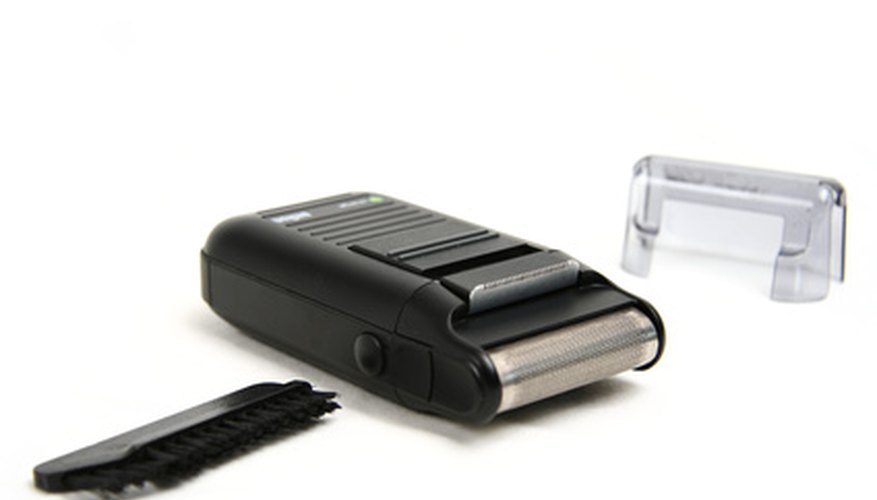Electric razors utilise a series of cutting blades covered with a metal-based screen. Small holes in the screen allow hair to reach the cutting blades while protecting the skin during the shaving process. With each use, hair and skin cells can build up on the electric razor and its components, feeding bacterial growth and reducing the razor's cutting abilities. Clean and sanitise your electric razor with quick-drying isopropyl alcohol.
- Electric razors utilise a series of cutting blades covered with a metal-based screen.
- Small holes in the screen allow hair to reach the cutting blades while protecting the skin during the shaving process.
Unplug and turn off the electric razor. Remove any attachments from the razor.
Remove the foil cover to expose the cutting blades. Some electric razors require squeezing the sides of the cover, while others have release buttons. Follow the manufacturer's instructions for your specific razor.
Hold the electric razor over a sink and brush away any hair from the cutting blades with a razor-cleaning brush or an old toothbrush.
- Hold the electric razor over a sink and brush away any hair from the cutting blades with a razor-cleaning brush or an old toothbrush.
Pour isopropyl alcohol over the cutting blades, holding the razor so the alcohol flows into the sink instead of inside the razor. Set the electric razor aside to air dry.
Rinse the attachments under running water to remove any hair. Rub the foil cover gently with your fingers, but avoid using a cleaning brush, as it may bend the foil.
Pour isopropyl alcohol over the foil cover and attachments. Set the parts aside to air dry.
Apply a small amount of razor lubricant to the moving parts of the razor.
Wipe away any excess lubricant with a cloth before reassembling the electric razor.
